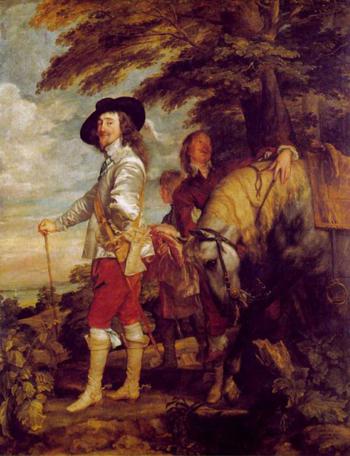Sir Anthony van Dyck, a leading court painter in England, was a Flemish Baroque artist. He was born on March 22, 1599 with the Flemish name Antoon van Dyck in Antwerp. He clearly showed talent at an early age while studying under Hendrick van Balen in 1609. In the year 1615, he started as an independent painter and had already set up a workshop with a younger friend Jan Brueghel the Younger. And by the time he was 15, he was already known as a highly accomplished artist. In 1632, King Charles I invited him to England to become a court painter. He was wed to Mary Ruthven, the Earl of Gowrie’s grand-daughter, in 1639 and they had an only daughter who was born on December 1, 1641.
Anthony van Dyck was considered by Peter Paul Rubens as one of his best pupils. He acquired all the skill and technique of Rubens, with regards to rendering the texture and surface of things, while working under him for years. But with regards to temperament and mood, he differed greatly from his master. His paintings always had a slightly melancholic and a lethargic mood, in which may had been the reason why it caught the people’s attention. While he was in England, he developed his own style in portrait painting which was a combination of a relaxed elegance and ease with a discreet authority of his subjects. His style dominated the realm of English portrait-painting until the end of the 18th century. He was famous for having the ability to portray the human figure with natural dignity and authority in his portraits.
Van Dyck was well-known for his portraits of King Charles I of England and Scotland, his family, and court. His most famous work truly was the portrait of King Charles I of England and it was clearly shown in the painting the technique he used, which visibly portrayed King Charles as a person with relaxed elegance, natural authority, and dignity. Representing the human figure to have the above mentioned qualities was Anthony van Dyck’s technique.
Aside from the portraits of King Charles I and his family, he also created various paintings of people and religiously inspired images. Before becoming a court painter, Anthony van Dyck spent six years in Italy and studied under various master painters and learned their techniques, particularly Titian who influenced him the most. While he was in Italy, he earned his living through creating portraits especially of the Genoese Aristocracy. He became a well-known portrait painter of the English court and aristocracy. He created over 350 portraits, including royal portraits, in just less than 10 years.
Anthony van Dyck died in London on the 9th of December 1641, just a few days after his daughter was born. He was then buried in St. Paul Cathedral. His death was so untimely but his painting style persisted for more than two centuries all over Europe. And because of his great contribution to the world of portrait painting, he earned the recognition of being one of the greatest painters of all time.
Author: Shyxter
